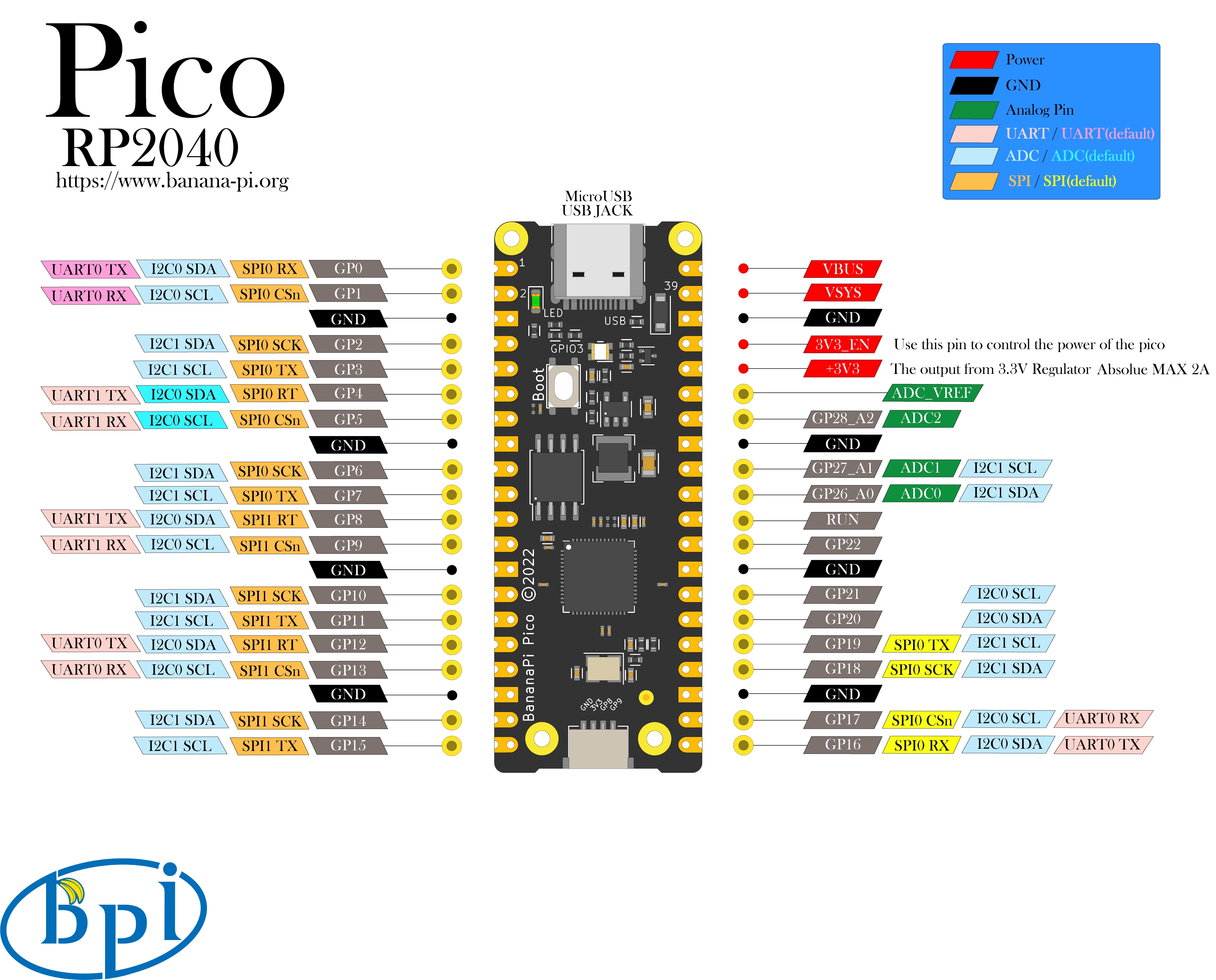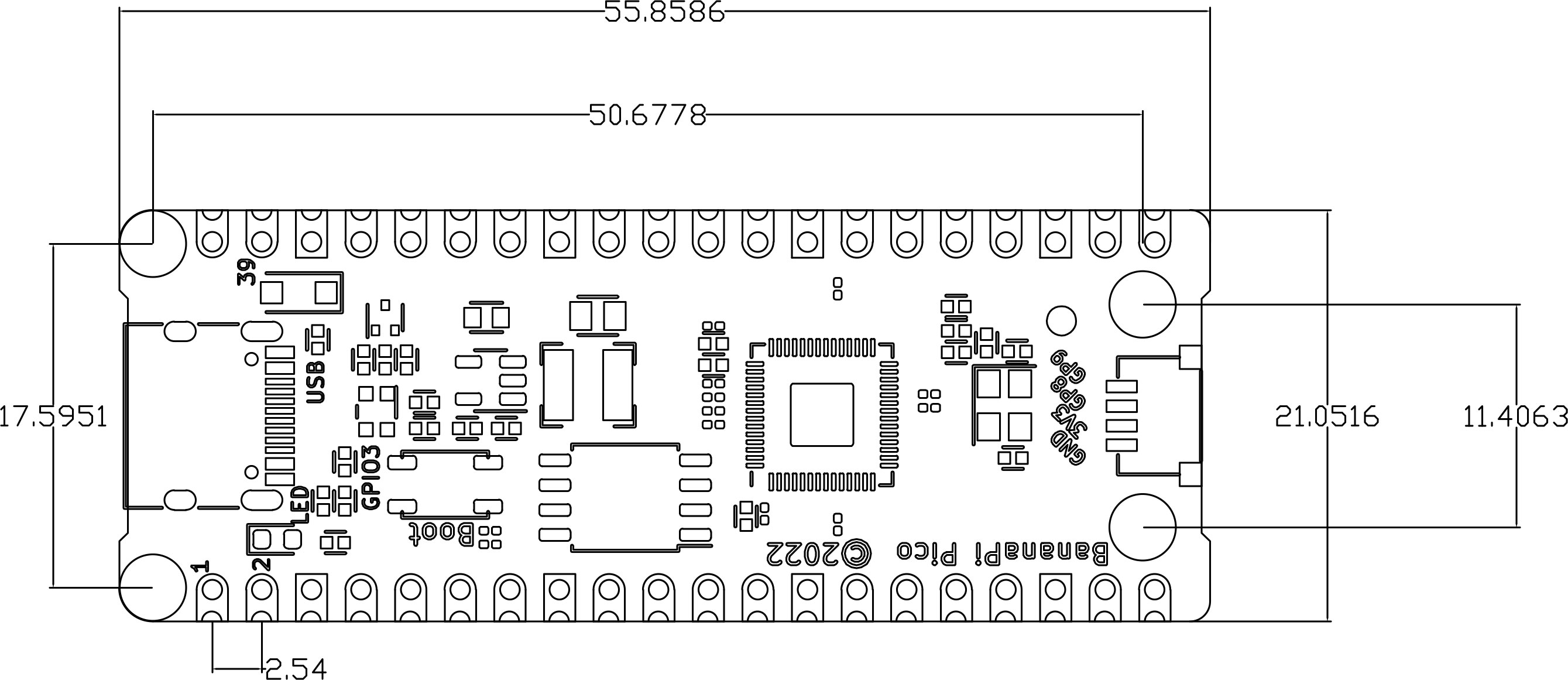Development board introduction
The Banana Pi Pico series is a low-power microcontroller development board designed for the Internet of Things.
BPI-Pico-RP2040 is a microcontroller development board launched by Banana Pi equipped with RP2040 chip. Its most notable feature is to add a Onboard WS2812 color LED; replace the 3-Pin DEBUG interface with a SH 1mm 4-Pin socket, which can be connected with Qwiic & STEMMA QT or any possible peripherals; replace the micro-USB socket with a USB Type-C socket , supports reversible insertion, and is compatible with the USB Type-C cable of most modern smartphones, no additional purchase is required.
Key Features
- Dual-core ARM Cortex M0+ CPU cores (up to 133 MHz)
- 264K SRAM
- 2MB Flash
- 26 available GPIO pins, 4 of which support ADC analog input
- Peripherals:
- 2 x UARTs
- 2 × SPI controllers
- 2 × I2C controllers
- 16 × PWM channels
- 1 × USB 1.1 controller and PHY, supporting host and device
- 8 × PIO state machines
- 1 x LED
- 1 x WS2812 LED
- 1 × SH 1mm 4-Pin socket
- 1 × USB Type-C socket
hardware
Interface diagram

Hardware Dimensions

| BPI-Pico-RP2040 Size Chart | |
| Pin spacing | 2.54mm |
| Mounting hole spacing | 17.6mm/ 11.4mm |
| Mounting hole size | Inner diameter 2.1mm/outer diameter 3.4mm |
| Motherboard Dimensions | 11.4 × 55.8(mm) |
| Board thickness | 1.2mm |
The pin spacing is compatible with universal boards (perforated boards, dot matrix boards), breadboards, and can be directly attached to other PCBs for easy debugging.

 Translate
Translate